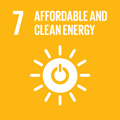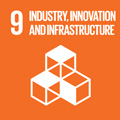- Docente: Gabriele Bellani
- Credits: 6
- SSD: ING-IND/06
- Language: English
- Moduli: Gabriele Bellani (Modulo 1) Gabriele Bellani (Modulo 2)
- Teaching Mode: Blended Learning (Modulo 1) Blended Learning (Modulo 2)
- Campus: Forli
-
Corso:
Second cycle degree programme (LM) in
Aerospace Engineering (cod. 5723)
Also valid for Second cycle degree programme (LM) in Aerospace Engineering (cod. 5723)
Learning outcomes
Aim of the course is to give the student the fundamental knowledge to plan and execute an experimental campaign in Aero and Fluid-dynamics, as well as the knowledge of the most important instruments and experimental techniques in Aerodynamics. Specifically, at the end of the course the student will be able to: - Determine the relevant variables and non-dimensional parameters for a given fluid-dynamic system; - Choose and/or design the most appropriate experimental setup and measurement instrument - Critically evaluate and analyze the experimental data together with the associated uncertainty"
Course contents
- Course Introduction:
Role of experiments in aerodynamics;
-Planning the experiment:
Non-dimensional analysis and the PI-theorem;
- Measurement tools and instruments in aerodynamics - Theoretical background
Sensor/Transucer
Measurement chain
Sampling frequency and sampling time
Wind tunnels
Pressure measurements
Hot wire anemometry
Laser doppler anemometry
Particle image velocimetry
- Laboratory excercises
Lab 1: Measurement chain, sampling frequency, sampling time, uncertainty estimation;
Lab 2: Hot-wire anemometry: probe design and calibration
Lab 3: Turbulent measurements, scaling and reporting
Lab 4: Optical measurements / Image processing
- Writing a report
Readings/Bibliography
1. Teacher's slides and notes avaliable on e-learning platform
Coursebook: Experimental Aerodynamics by Stefano Discetti and Andrea Ianiro, CRC Press, 2017
ISBN 1498704042, 9781498704045
Suggested literature:
-The Pi-Theorem – applications to Fluid Mechanics,
L.P. Yann; (2012)
-Low-Speed Wind Tunnel Testing, Jewel B. Barlow
Teaching methods
This course will be held with innovative teaching methdos:
The initial part of the course will be conventional lectures held by the teacher where general and theoretical aspects of Experimental Aeordynamics are indroduced and discussed by the teacher in frontal lectures;
The second part of the course will involve "hands-on" laboratory experience at the international research center CICLoPE. Laboratory exercises are sepcifically designed for the students to learn the best practices in experimental aerodynamics and to apply and verify the theoretical background learnt in the lectures.
The final part of the course the students will present the results of the laboratory experience and learn how to write a scientific report.
The course will be complemented with seminars held by international lecurers on advanced experimental and numerical techniques;
Digital material such as recorded lectures and digital lecture notes, as well as other multimedia material will be available on Virtuale platform.
As concerns the teaching methods of this course unit, all students must attend Module 1, 2 online [https://www.unibo.it/en/services-and-opportunities/health-and-assistance/health-and-safety/online-course-on-health-and-safety-in-study-and-internship-areas], while Module 3 on health and safety is to be attended in class. Information about Module 3 attendance schedule is available on the website of your degree programme.
As concerns the teaching methods of this course unit, all students must attend Module 1, 2 online [https://www.unibo.it/en/services-and-opportunities/health-and-assistance/health-and-safety/online-course-on-health-and-safety-in-study-and-internship-areas], while Module 3 on health and safety is to be attended in class. Information about Module 3 attendance schedule is available on the website of your degree programme
Assessment methods
The examination is mainly an oral with 2 or 3 questions on the different subjects covered in class (including seminars). For each question, the student will be given some time to wirte down the main points to be discussed with the teacher.
The student is expected to clearly explain all the relevant aspect of the experimental or analysis techniques, including physical principles behind the measurement technique, all the mathematical aspects discussed in class, and the technical issues connected to the application
Teaching tools
PPT slides, whiteboard, PC excercises, Hands-on laboratory (if allowed)
Office hours
See the website of Gabriele Bellani
SDGs


This teaching activity contributes to the achievement of the Sustainable Development Goals of the UN 2030 Agenda.
